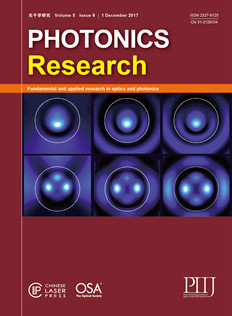
Editor(s): Li Ge, Liang Feng, and Harald G. L. Schwefel
Year: 2017
Status: Published
Optical microcavities have attracted tremendous interests in both fundamental and applied research in the past few decades, thanks to their small footprint, easy integrability, and high quality factors. Using total internal reflection from a dielectric interface or photonic band gaps in a periodic structure, these devices do not rely on conventional metal-coated mirrors to confine light in small volumes, which have brought forth new developments in both classical and quantum optics.
This publisher’s note reports correcting Ref. [12] and adding a reference in [Photon. Res.5, OM1 (2017)2327912510.1364/PRJ.5.000OM1].
We demonstrate terahertz (THz) frequency laser emission around 3.2 THz from localized modes in one-dimensional disordered grating systems. The disordered structures are patterned on top of the double-metal waveguide of a THz quantum cascade laser. Multiple emission peaks are observed within a frequency range corresponding to the bandgap of a periodic counterpart with no disorder, indicating the presence of mode localization aided by Bragg scattering. Simulations and experimental measurements provide strong evidence for the spatial localization of the THz laser modes.











